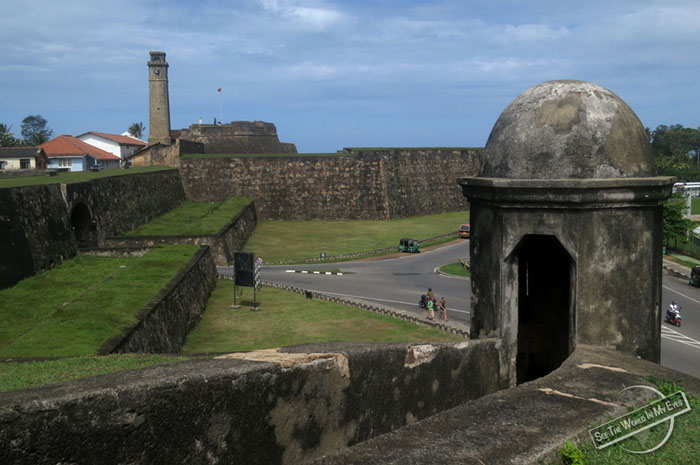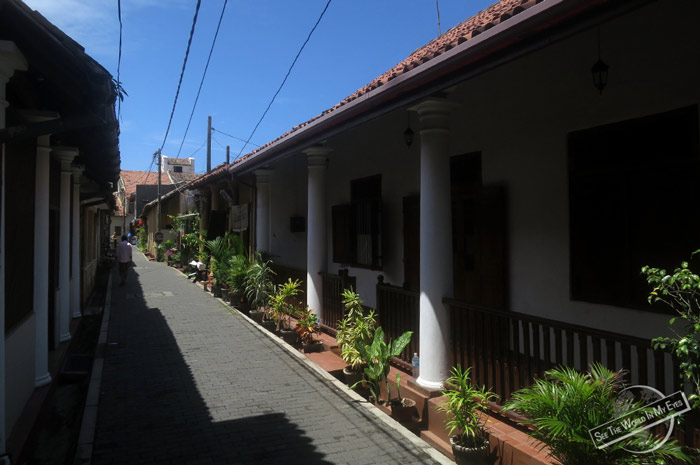Travel Day 1133 – Galle Fort, SRI LANKA
After just being able to go on a short stroll along the sea-walls yesterday, today I was finally able to fully appreciate the UNESCO enlisted Dutch fortress city of Galle…
Galle city had been, as any other place along the coast of Sri Lanka, a Portuguese settlement first, before it was taken over by the Dutch. While the location was only accidentally discovered in 1505 by Portuguese ships that were blown off course, it took until 1589 before a small fort named Santa Cruz was established at this very spot. The consecutive expansions of the fort with walls and bastions were only short-lived as the Dutch destroyed most Portuguese traces after their conquest of Galle in 1640…
The Dutch in turn built a much stronger and modernized fortress city, making Galle the main sea port of Sri Lanka for about 200 years before the British finally moved it to Colombo. Today the Old Town of Galle and its Fortifications were not only a UNESCO enlisted World Heritage Site, but also the largest fortress in Asia built by European powers. Luckily most of the fortifications and colonial houses still existed today, giving Galle an extremely authentic appearance and reminding of other fortress cities such as Cartagena or San Juan…
It actually seemed almost surprising that the Dutch went through the effort of building an entirely fortified city, but on the other hand it was a great indicator for the high value and importance that Sri Lanka must have had for colonial powers back in day. Since the Portuguese were the first to discover the value of the natural harbor of Galle, it seemed only logical that some traces would remain from their period of occupation. As it turned out, in fact two of the twelve bastions were said to be leftovers from the Portuguese times and the Dutch simply incorporated them into their city fortress when they built the actual sea walls to surround the area…
The two remaining Portuguese bastions were the Black Fort and the Flag Rock. While the Black Fort was actually a small fortress on its own, constructed to protect the harbor and the entrance to the city, the Flag Rock on the other hand was rather a natural occurrence that was used to signal ships and help them navigate safely into the harbor. Everything else that was set up by the Portuguese were rather wooden palisades and mud walls, which the Dutch turned into actual stone walls, fortifying the city and protecting it against invasions especially from the land side…
Actually the land side received the highest walls and strongest bastions, called Sun, Moon and Star Bastions. In combination with the tall clock tower and the sentry boxes at the corners, these three bastions seemed to be most impressive, especially while approaching the city on food. Besides the bastions, ramparts and fortifications, the UNESCO city of Galle was mainly characterized by its many colonnaded Dutch colonial houses that could best be experienced while walking through all the many little side roads and alleyways…
A lot of these Dutch colonial houses were actually still in pretty good shape or they had been restored recently, giving the whole city of Galle a nice historic appearance and the visitor a feeling of having entered a different world form a former time. I personally really enjoyed it that way, and I was not only very happy that I managed to visit Galle, but I also knew already that I would definitely spend all my remaining time in Sri Lanka exploring every single corner of this amazing UNESCO enlisted fortress city called Galle…



Leave a Reply